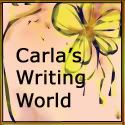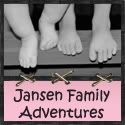{What is your plan?}
I see a lot of posts in writing groups where people ask something similar to "How do I get started?" or "What do I do next?"
I've been thinking about this a lot because... well, it's January, and I have a lot of New Year ideas floating around. January is a great time of year to look at where you've been, where you're going, and what your plan is to get there. I've been working on this myself, and I thought I'd share in case it is helpful to anyone. I'd love to see your plans too--share it to make yourself accountable and help others with ideas!
Where I've been:
2020: A year of learning. I learned SO much! I started my little publishing company, hired an illustrator, ran a month-long Kickstarter, and published A Dinosaur Made Me Sneeze, the first in a fun Earth science meets fiction series. My books arrived the last few weeks of the year.
2021: Try everything! I learned SO much more this year! I think bulk printing on off-set printers is the best way to publish, but I wanted to know what everyone was talking about with KDP. So I started a nonfiction series for preschoolers and published When Will Cicada Sing? and Who Needs a Volcano? as paperbacks and ebooks on KDP. I prepared A Dinosaur Made Me Spill and ran a 2-week Kickstarter for it (my Kickstarter backers should get it this spring and it will probably be released to the public in the fall). My girls pushed me to publish Ten Very Merry Yetis in December (and we sold out of it at the one Christmas event I did)! I did school visits, street fairs, and festivals...and I LOVED it!! I sold about 1800 books this year, and actually made a profit!
Where I'm Going:
2022: (Keep Trying New Things!) and Scaling UP! I want to sell more, reach more people, and keep making books! I have at least one more dino book coming, several more nonfiction preschool books, and a new decodable series for early readers. I want to work with more people and other publishers. I want to learn everything (yes, everything, lol!), try new things, and grow my little business!
My Plan: This is clearly the abbreviated, goal-oriented version.
=> Finish setting up A+ content for my KDP books.
=> Figure out how to make higher return ads on KDP.
=> Finish up A Dinosaur Made Me Spill and release it in an epic, exciting launch.
=> Finish writing the next dino book.
=> Write two more nonfiction preschool books.
=> Outline the rest of the nonfiction preschool series.
=> Write a kindergarten science curriculum based on the nonfiction preschool series.
=> Have an epic, nation-wide launch for my new early readers.
=> Grow FB & IG.
=> Do more school visits, festivals, street fairs, and other events!
Soooo... what's your plan?! What are you working on?!












